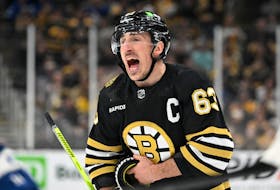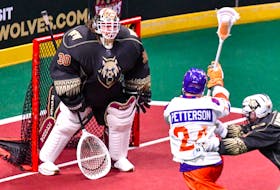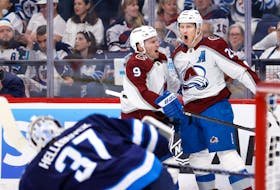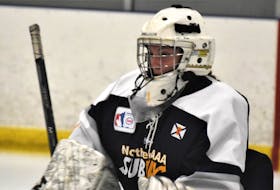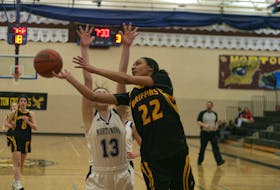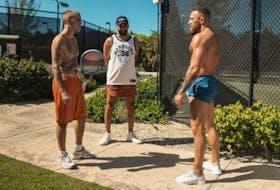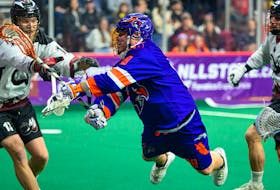Somewhere out there, Ernie Godden and Dale Derkatch must be thinking: if only we were coming up through the junior ranks today.
Marcel Dionne is in the Hall of Fame, and Theo Fleury should be. Johnny Gaudreau and Tyler Johnson are two of the most dynamic players in the NHL. Brad Marchand plays much bigger than his size. But make no mistake, the National Hockey League was and very much still is a big man’s game.
The numbers support that claim.

Last season, NHL rosters featured 34 defencemen who were listed under 5-11. Given there’s likely eight D-men on each of the 31 teams, you’re looking at a total of 248 players in that position.
Up front, 115 forwards in the NHL last year stood under 5-11. Going with 14 forwards per team, there were 434 forwards in 2017-18.
As for the goalies, only three in the entire league last season were listed under 5-11.
Yes, it’s patently obvious, hockey is a big boy’s game.
But it’s changing.
How about these numbers? Eight of the 31 players selected in the first round of the NHL draft last weekend in Dallas were under 5-11, and six of those were defencemen. Among them was 5-9 Quinton Hughes, who went seventh overall to the Vancouver Canucks.
There might not necessarily be a trend towards going with smaller players in the NHL, but let’s just say the door is no longer closed to athletes who are not 6-1.5 and 200 pounds, which just happens to be the league’s average size.
During a three-year run with the Western Hockey League’s Regina Pats in the early 1980s, Derkatch tore it up, averaging 72 goals and 160 points. He was selected in the seventh round of the 1983 NHL Entry Draft by the Edmonton Oilers.
Listed at 5-5, Derkatch never played an NHL game, but did skate for several years in Finland and Germany.
Same storyline with Godden, the Windsor Spitfires star who scored an average of 50 goals and 96 points over three OHL seasons.
Godden was drafted by the Toronto Maple Leafs 55th overall in 1981. Standing 5-8, he managed to appear in five games with the Leafs, picking up a goal and an assist.
Godden, who lit up the AHL for a couple of years before calling it quits, was 5-8.
While the rule of thumb with most pro sports is a good big man is always better than a good smaller man, the school of thought with the NHL is now changing with the belief a good small man is probably better than an average big man.

“The trend in the game now is skating,” says Mark Hillier. “It’s really gone to skating and speed, and if you’re going to play, you have to skate.
“The pure physics of it is a 5-11 defenceman usually skates better than a 6-5 defenceman. It seems like there’s more room (in the NHL) for smaller defencemen because they can get back to pucks quicker to transition the puck up the ice quicker.
“A defence partner can’t hold up forechecker, so the other guy has to get back there quickly to the puck and move it up.”
Hillier knows about these things. It’s his job, as the Winnipeg Jets’ director of amateur scouting. Hillier runs the Jets’ draft table, although Winnipeg general manager Kevin Cheveldayoff, of course, has the final say.
Hillier, when he’s not off watching some 240-odd hockey games in the winter, calls Torbay home.
He came to Newfoundland way back in 1992, as the St. John’s Maple Leafs’ director of hockey ops. He later became a Toronto scout, joined the Atlanta Thrashers and came to Winnipeg when the team relocated and morphed into the Jets.
Hillier has, for the last 22 years, watched a lot of hockey here, there and everywhere as a full-time NHL scout.
So he’s got an idea about what pro hockey teams are looking for these days.
“Teams aren’t as scared to take the smaller player anymore,” he said, before quickly adding, “but you can’t have too many of them.
“If you have the one smaller guy on your defence who’s a real good skater, good at moving the puck, great, but you can’t have two of them because they have to defend, too.”
The Jets like size. An average Winnipeg player is 6-2 and 205 pounds (the smallest player on the roster, Toby Enstrom, is 5-10, the only one under 6-0).
There used to be a time when NHL teams went with a big player in the later rounds of the draft, but now the trend is go with a small, skilled skater.
“We took a Finnish kid named Sami Niku in the seventh round in 2015. He was 5-11, 160 pounds. Now he’s 6-0, 190 and he just won top defenceman in the AHL, and we think he’s a big part of our future.
“We’ll take these guys, but they have to be elite skaters, have elite hockey sense, and they have to use their stick well. They still have to defend the Blake Wheelers and Mark Scheifeles down low, and you can’t hook and hold like you did years ago. So it’s a leverage thing, getting from the corners to the net and only the guys with really good feet and smarts can do it.”
After the Jets selected Patrik Laine second overall in 2016, Winnipeg took a flyer on their next pick, 6-7 Windsor Spitfires defenceman Logan Stanley.
Stanley will turn pro in the fall.

“We think he’s still a really good prospect for us,” Hillier said. “He’s a good skater, got good agility for a big man.
“It takes longer for big guys. At 16-years-old, you haven’t grown into your body. It might take until you’re 22 or 23. We know it’s a longer development path.
“And if you hit on a big guy who can skate and move the puck and use his body, you might have something really special.”
The Jets have been one of the most successful organizations to build through the draft. Of the 32 players who appeared in at least one NHL game for Winnipeg last season, 14 were drafted by Winnipeg and three by Atlanta.
The team has hit home runs on its first round draft picks (Mark Scheifele, Jacob Trouba, Josh Morrissey, Nikolaj Ehlers, Kyle Connor, Jack Roslovic and Laine) and have done well with mid- to late-round picks (Andrew Copp, 3rd round in 2013; Connor Hellebuyck, 5th round in 2012; Adam Lowry, 3rd round in 2011; Ben Chiarot, 4th round in 2009; Toby Enstrom, 8th round in 2003).
There’s no secret, Hillier says. He and his staff watch a lot of hockey and gather a lot of information on juniors, collegians and Europeans.
“It’s about hard work with two keys — finding guys who can skate and have some hockey sense.
“We really think game is going to a speed game, a skating game, but the other part to that is you have to be able to think fast, too. It’s no good having the wheels if your brain can’t keep up.”
Robin Short is The Telegram’s Sports Editor. He can be reached at [email protected] Follow him on Twitter @TelyRobinShort

